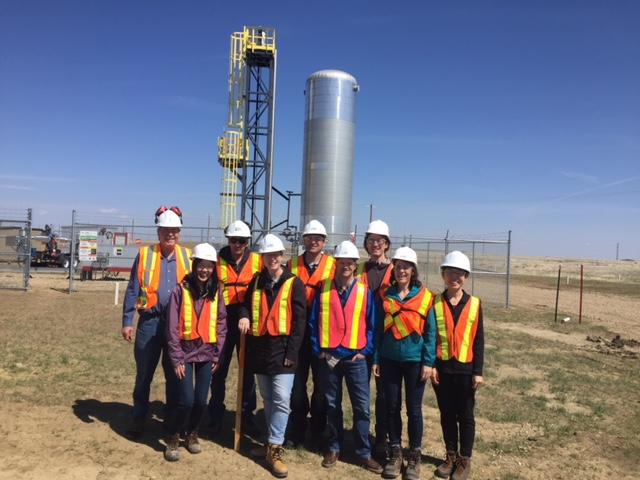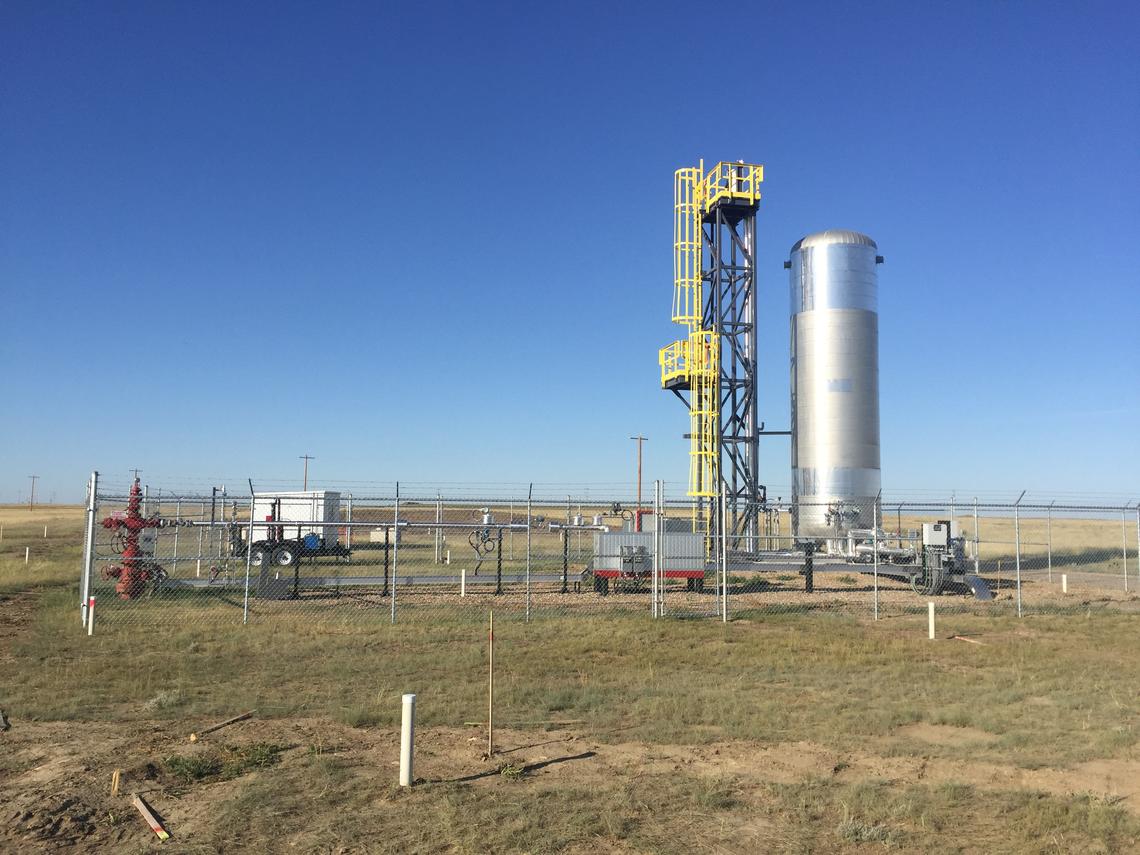July 27, 2018
Research station near Brooks well on its way as a world leader in methane monitoring

UCalgary researchers are developing technology that may help energy operations reduce GHG emissions.
Global Research Initiative
Governments and companies around the world are pledging to reduce methane emissions, especially greenhouse gas emissions emitted by the upstream petroleum industry. Leading emissions-modelling technology, being developed by University of Calgary researchers, may go a long way to accurately measuring these emissions to help jurisdictions and upstream petroleum companies meet their reduction targets.
The energy industry emits significant amounts of greenhouse gases, including methane, through flaring, venting and fugitive equipment emissions. Researchers at the Containment and Monitoring Institute (CaMI) Newell County Field Research Station (FRS) near Brooks, Alta., work with industry on carbon capture and storage technologies, as well as developing and testing sensors and methods to measure emissions coming from upstream petroleum operations. CaMI is a partnership between the UCalgary and CMC Research Institutes (CMCRI), a not-for-profit corporation. CaMI is funded, among others, by the Canada First Excellence Research Fund (CFREF) initiative, Global Research Initiative in Sustainable Low Carbon Unconventional Resources. The 200-hectare Newell County Field Research Station provides the step between modelling in the lab and full-scale field pilots.
Establishing ways to accurately quantify emission rates
“In the past it’s just been, ‘Yes this area is leaking, it looks like a big leak but we don’t know how much,’” says Don Lawton, director of CaMI and professor of geophysics in the Faculty of Science. “Qualitative measurements have been around for a while, but you can’t use forward-looking infrared cameras to accurately quantify emission rates. Now we’re looking to establish methods for quantitatively identifying emission sources and their rates in terms of cubic metres a day to achieve the new policy goals of reducing methane emissions.”
The Alberta Energy Regulator (AER) is developing new regulations to facilitate methane emissions reductions in partnership with the Government of Alberta and industry. Officials with the AER visited CaMI in May to learn more about the FRS and the array of technologies being developed there.
“We’re looking to understand what capabilities currently exist for testing new technologies for the detection, measurement, and mitigation of methane emissions,” says Laura Johnson, technical adviser, research and innovation, Climate Policy Assurance with the AER. “We enjoyed our visit to the CaMI research station. We were especially interested in the role that the research station has played in testing aerial detection technologies,” says Johnson. “Enabling industry innovation is a key component of our regulatory framework.”

A delegation from the AER visited CaMI in May to learn more about the technologies being developed.
Global Research Initiative
New technologies sense and measure methane releases
“We’ve done a number of controlled natural gas release experiments at our site,” says Lawton. “We release compressed natural gas at a very well-calibrated rate that we can monitor using various detectors, some of which we’re developing within our own research group, as well as other detectors, some of which are already commercial.”
Using funding from Western Economic Diversification and working with University of Colorado Boulder, University Laval and Longpath LLC, CaMI is building a dual frequency comb laser interferometer methane sensor for the FRS. Lawton adds, “In addition, we have also undertaken a number of controlled release experiments at our site in partnership with the University of Calgary Centre for Smart Emissions Sensing Technologies (SENST) using a detector developed by Chris Hugenholtz, director of SENST and associate professor in the Department of Geography.” His team develops analytics for methane sensing systems. One of their technologies is a mobile vehicle system that is able to screen large areas quickly and provide real-time localization and quantification of methane emissions.
This system was recently tested in California against other leading methane sensing technologies in the Stanford / Environmental Defense Fund Mobile Monitoring Challenge.
‘We want our site to be an internationally credited calibration station’
“We’re setting up a leading-edge sensor system so people can come to the FRS and calibrate their methane detectors. They could come to our site and get them calibrated against a known standard,” says Lawton. “We want to be methane HQ. We want our site to be an internationally credited calibration station, and we are well on our way.”
Located in the heart of Canada’s energy sector, the University of Calgary has built a reputation as a global leader in energy research and innovation. With a focus on our low-carbon future, diverse teams are also assessing the effects of energy-related processes while harnessing unconventional hydrocarbon resources through the Energy Innovations for Today and Tomorrow research strategy.
